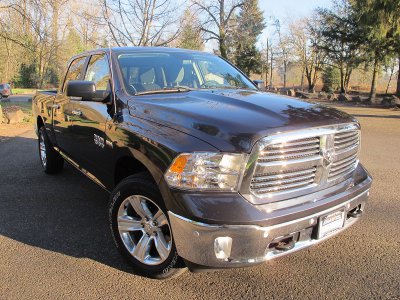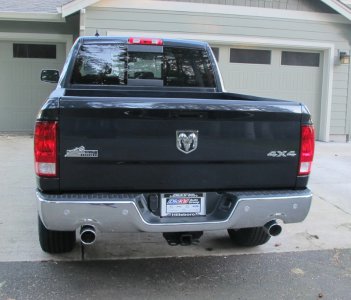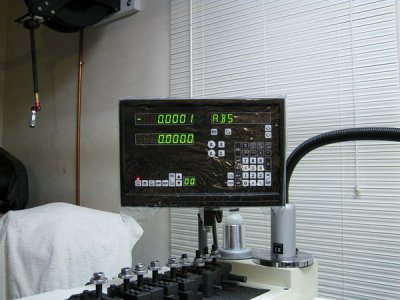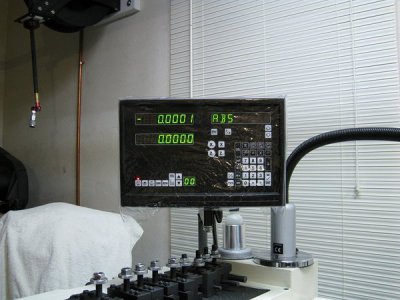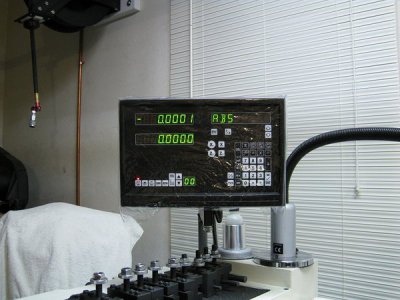Coolidge I've basically got the same set up as you do, but with a Fuerda 8" 6 jaw. I ran into some issues with parting steel rods, especially mild steel on my 4003G. A lot of chatter and the tool tended to dig in and snap the blade. Tried different RPM's, parting blades and holders without much success. I decided to try a slightly wider Cobalt HSS parting tool. Bad choice. Instead of snapping the blade, it broke my compound. I did some research and it seems that it is not recommended to part mild steel with some lathes. I replaced my compound assy. with one from a Clausing 5900 series 12 X 36 lathe. It's a little more beefy and has more material around the dove tails but is slightly wider, which is no problem. It reduced the chatter somewhat but I still use extreme caution when parting steel. Aluminum is no problem.
On another note, I use a 16 X 120 Axelson lathe at work and it is a beast! It weighs in the neighborhood of around 6,500 lbs. I can part any material with any width blade and it doesn't even whimper. Smooth as glass. Based on this I suspect that under certain conditions, you need to use caution when parting with the 4003G. If you look through TUBLCAIN's video's on YouTube, he mentions that if he has to cut a mild steel rod on his 12 X 36 Atlas or Clausing lathe, he uses a hacksaw LOL! He doesn't even attempt to part it off.
I've also done one additional modification and replaced my single phase motor with a 2HP 3-Phase unit with a VFD. Significant improvement in the surface finish of the material. I used to get kind of a barber pole pattern sometimes. Couldn't feel it, but it was clearly visible. Again, tried different feeds and speeds. All it did was change the pitch of the pattern. Replaced the motor and added the VFD, now no more pattern and surface finish is excellent. I don't know if there was a problem with my original motor, but I'm happy with what I've got now.

